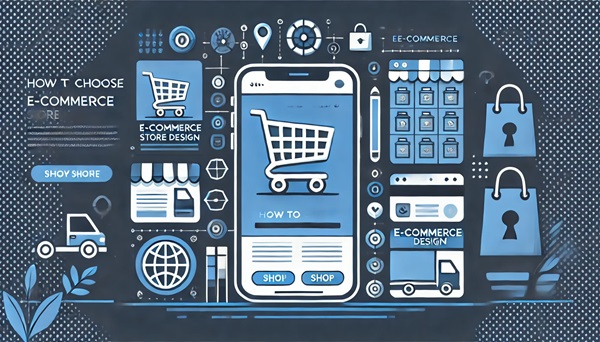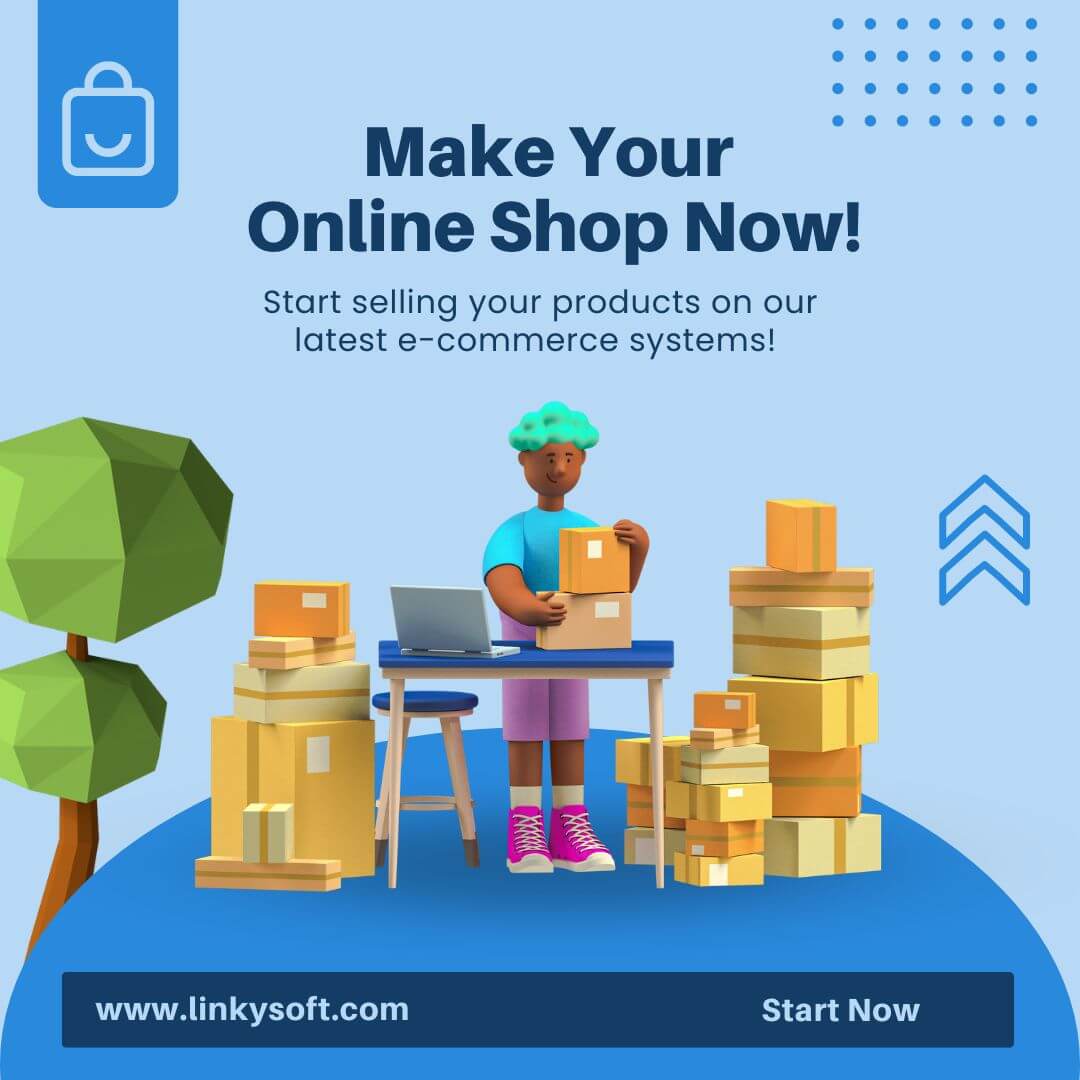In today's fast-paced digital marketplace, having an effective e-commerce store design that accurately reflects your brand identity is crucial to the success of your online business. The design of your store is more than just aesthetic; it is a vital part of the customer experience and can significantly impact purchasing decisions. If your store's design doesn't align with your brand's core values, it could create confusion or distrust among potential customers.
Understanding "How To Choose An E-Commerce Store Design That Reflects Your Brand Identity?" will not only ensure a seamless user experience but will also solidify your brand's position in the minds of consumers. we will explore various aspects that contribute to creating a cohesive and engaging e-commerce store design that speaks directly to your target audience and reflects your unique brand identity.

What Is Brand Identity and Why Is It Important for E-Commerce Stores?
Brand identity is the collection of all elements that a company creates to portray the right image to its consumers. These elements include the brand's name, logo, color scheme, typography, messaging, and more. In an e-commerce setting, your brand identity should extend across every touchpoint, including your website, packaging, social media presence, and email communication.
When a brand’s identity is clear and consistent, it helps to build trust and loyalty with customers. Your e-commerce store is a critical medium for expressing your brand identity. A customer’s perception of your brand is often shaped by their first interaction with your online store. Therefore, your store’s design should evoke the right emotions and convey the intended message to visitors, ensuring it leaves a lasting positive impression.
Understanding the Core Components of Brand Identity
Your brand identity consists of several key elements that must be reflected in your e-commerce store design:
- Brand Name and Logo: The most obvious and immediate visual representations of your brand. They must be strategically placed in your store to ensure visibility and recognition.
- Color Palette: Colors evoke specific emotions and reactions. The colors of your store should align with your brand’s personality and evoke the desired emotional response from your customers.
- Typography: The fonts you choose communicate a great deal about your brand’s tone and style. For example, serif fonts might convey tradition and reliability, while sans-serif fonts might give a more modern and clean appearance.
- Voice and Messaging: Consistent messaging across all communication channels is vital. Whether it’s the tone of your product descriptions or the way you interact with customers on social media, your voice should remain true to your brand’s character.
Choosing the Right E-Commerce Platform to Reflect Your Brand Identity
One of the most important decisions you’ll make in your e-commerce journey is selecting the right platform for your online store. The platform you choose must support your brand identity by allowing you to customize your store's look and feel to align with your brand's vision. Some platforms offer more flexibility than others when it comes to design and user experience.
Factors to Consider When Choosing an E-Commerce Platform
To ensure your store reflects your brand identity, consider the following factors when choosing an e-commerce platform:
- Customization Options: Does the platform allow you to fully customize the design, layout, and functionality of your store? If you have specific design elements that are core to your brand identity, ensure the platform supports this level of customization.
- User Experience (UX): The platform should enable you to create a user-friendly interface. A complicated, cluttered store could damage your brand's image and discourage customers from purchasing.
- Scalability: Your store should be able to grow with your business. If your brand identity evolves over time, your e-commerce platform must allow for updates and expansions without major disruption.
- SEO Capabilities: To ensure your brand identity is discoverable, your e-commerce platform should support SEO best practices. This includes customizable URLs, meta descriptions, and alt tags for images.
- Mobile Responsiveness: With the increasing number of users shopping via mobile devices, ensure that the platform provides responsive designs that adapt to various screen sizes without losing your brand’s aesthetic or functionality.
Cartz - E-Commerce Management System, for instance, is a highly customizable solution from Linkysoft that provides businesses with the tools they need to design a store that accurately represents their brand. Additionally, Linkysoft's Togar Multi-Vendor E-Commerce Management System is ideal for businesses with more complex needs, such as those that operate in a multi-vendor marketplace.
How to Choose a Visual Design that Speaks to Your Audience
Visual design plays a significant role in reflecting your brand identity. The design choices you make in terms of layout, color, typography, and imagery all contribute to how customers perceive your brand. It’s essential to ensure that the visual elements of your e-commerce store align with your brand’s core values and resonate with your target audience.
Color Psychology and Its Impact on E-Commerce
Colors have a psychological impact on how people perceive brands. Studies have shown that certain colors can influence consumer behavior and evoke specific emotions. For example:
- Red: Often associated with energy, urgency, and excitement. Many brands use red for call-to-action buttons or clearance sales to drive conversions.
- Blue: Associated with trust, calmness, and professionalism. Banks and tech companies often use blue to convey reliability.
- Green: Linked to growth, health, and nature. Green is commonly used by brands that promote sustainability or wellness products.
- Yellow: Evokes feelings of happiness and optimism. Brands that want to appear fun and approachable may use yellow in their design.
It’s important to select colors that align with your brand’s personality. For example, if your brand identity is centered around luxury, you might opt for a black and gold color scheme, whereas a more playful brand might use bright and vibrant colors to create a sense of excitement.
Examples of Color Psychology in Action
Many leading brands use color psychology to their advantage. Take McDonald’s, for example, which uses a combination of red and yellow in its branding. Red stimulates appetite, while yellow is associated with happiness, making it a perfect combination for a fast-food restaurant.
The Importance of Typography in Brand Representation
Typography is often an overlooked element in e-commerce design, but it plays a crucial role in reinforcing your brand identity. The fonts you choose should not only be readable but should also match the tone and style of your brand.
Choosing Fonts That Align with Your Brand Identity
The right font can make a significant impact on how customers perceive your brand. Here are some examples of font types and the messages they convey:
- Serif Fonts: These fonts, like Times New Roman, convey a sense of tradition, reliability, and authority. They’re often used by brands that want to appear professional and established.
- Sans-Serif Fonts: Fonts like Arial and Helvetica are clean, modern, and easy to read. These fonts work well for brands that want to project a contemporary and approachable image.
- Script Fonts: Script fonts mimic handwriting and are often used to add a personal or elegant touch to a brand’s design. These fonts can be useful for luxury brands or those that focus on craftsmanship and creativity.
- Display Fonts: These fonts are designed to make a statement. They are often bold and decorative, making them ideal for brands that want to appear unique and daring.
When choosing typography for your e-commerce store, ensure that the fonts align with your brand’s overall tone. Also, make sure that the font is legible on all devices, including mobile phones and tablets.
Designing a User-Friendly Interface: Enhancing the Customer Experience
While the visual elements of your e-commerce store are crucial, the overall user experience (UX) plays an equally important role in building your brand identity. A store that is visually appealing but difficult to navigate can frustrate customers and negatively impact their perception of your brand.
Creating an Intuitive Navigation Structure
Clear and intuitive navigation is essential for a positive user experience. Your customers should be able to easily find what they’re looking for without confusion. Organizing products into well-defined categories, providing search filters, and including a prominent search bar are all ways to improve navigation.
In addition to product categories, your navigation should include key pages such as the About Us page, Contact Information, and any other relevant brand content. Ensuring that these elements are easy to find helps build trust and makes your brand appear more professional.
Examples of Effective Navigation in E-Commerce
Some leading brands have mastered the art of user-friendly navigation. Amazon, for example, provides a vast array of categories and subcategories, making it easy for customers to find exactly what they’re looking for. The site also offers advanced search filters, helping users narrow down their options.
Mobile Responsiveness: Ensuring a Seamless Brand Experience Across Devices
With more than half of all e-commerce traffic coming from mobile devices, having a mobile-responsive design is no longer optional—it’s a necessity. A mobile-responsive design ensures that your website adapts to different screen sizes, providing a seamless experience for users regardless of the device they are using.
How Mobile Responsiveness Impacts Brand Perception
If a customer visits your e-commerce store on their mobile phone and encounters a broken layout or has trouble navigating, it can create a negative impression of your brand. Customers expect a smooth and intuitive experience, regardless of whether they are browsing on a desktop, tablet, or smartphone.
Ensure that all elements of your store, including images, text, and buttons, are optimized for mobile devices. Test your site on various devices to ensure that it looks and functions well across all platforms.
Tools for Testing Mobile Responsiveness
There are several tools available for testing your website's mobile responsiveness. For example, Google’s Mobile-Friendly Test is a free tool that allows you to check how easily a visitor can use your page on a mobile device. Tools like BrowserStack offer more comprehensive testing across different devices and operating systems.
Leveraging Content to Enhance Your Brand Identity
Content is one of the most powerful tools for conveying your brand’s story and engaging with your audience. Whether through product descriptions, blog posts, or email campaigns, the content you produce should be consistent with your brand’s voice and messaging.
Crafting Product Descriptions That Reflect Your Brand’s Personality
Product descriptions are not just about listing features; they should also reflect your brand’s personality and tone. A brand that focuses on innovation and cutting-edge technology might use technical language and emphasize advanced features, while a brand that focuses on sustainability might highlight eco-friendly materials and ethical production methods.
For example, Apple uses minimalist and elegant language in its product descriptions to reflect its brand’s focus on design and innovation. Meanwhile, brands like Patagonia focus on sustainability and environmental responsibility in their product descriptions.
Conclusion
In the competitive world of e-commerce, your store's design is a powerful tool for expressing your brand identity and building lasting relationships with your customers. From choosing the right platform and visual elements to ensuring a seamless user experience, every decision you make should reinforce who you are as a brand. By following the guidelines outlined in this article, you can create a cohesive and engaging online store that reflects your brand’s unique identity and stands out in the marketplace.
For a seamless integration of your brand identity with your e-commerce store, consider using Linkysoft’s e-commerce systems, such as Cartz or Togar Pro, which provide customizable and scalable solutions for businesses of all sizes.








